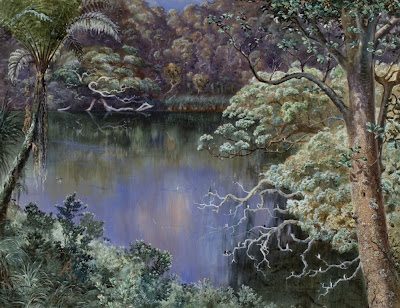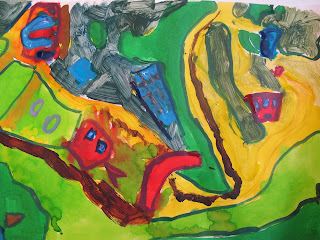The opening of Auckland Art Gallery at 3.30pm on Friday 17 February 1888
It is nearly 125 years since Auckland Art Gallery opened.
No photographs were taken at the opening of Auckland Art Gallery, 3.30pm on Friday 17 February 1888. This was because interior photography, other than in purpose-built portrait studios, was not technically available in Auckland at that time. Yet, from the news coverage, we learn that many people converged at the Gallery’s entrance in Coburg Street (now Kitchener Street) to attend this occasion. The speeches were given inside the exhibition room proudly described as ‘the largest Art Gallery in the Australian Colony…105 feet in length, 32 feet in breadth… with a wall space of 5,890 square feet’. Interestingly, news coverage of the event noted that many women were present. I suppose many of the men who might have been there were at their jobs.
The speakers at the opening were Mayor Albert Devore, Governor Sir William Francis Drummond Jervois, KCMG, CB and Auckland Society of Art President Mr E A McKechnie. The governor said, ‘Ladies and Gentlemen, this Art Gallery is, thanks to Sir George Grey, the first permanent one in New Zealand’. He added, presciently, ‘it is most gratifying to know that there are already many able artists in this country whose work will become the foundation of a New Zealand school of painting’.
The Gallery was still being completed at the time of the Library’s opening on Tuesday 22 March 1887. Sir George Grey, twice governor of New Zealand, had been central to the Grand Opening Ceremony of Auckland’s Public Library. In his address, Grey provided an account of the need for arts and knowledge to inform the public. In early February 1888, Sir George informed the Mayor of Auckland that he was unwell and would be unable to attend the Gallery opening, yet the 28 paintings, which he had gifted, would be on show. The Herald commentator described many of the artworks in detail.
One of the features which emerge from the opening speaker’s comments that day is the notion that Auckland Art Gallery should collect both international and New Zealand art. It was suggested that living artists’ works be included. As well as this, the speakers expressed the wish that the City of Auckland, its businesses and its citizens work together to support both the growth and development of the Gallery.
Mayor Devore commented that although artworks had already been gifted and loaned, he hoped more gifting of art would occur. The governor added he believed Sir George Grey’s philanthropy and his endowment of books and art to the Library and Gallery was expressly ‘for the free use of the people’.
It has been fascinating to review which artworks the public saw on Friday 17 February 1888. They have helped determine the subsequent collection’s growth and focus.
Caspar Netscher’s Girl Arranging Flowers was one of Sir George Grey’s personal favorites; it had belonged to his mother. The 1862 William Ewart painting of his equerry Hami Hone Ropiha (John Hobbs) was the first New Zealand portrait to enter the Gallery’s collection. Governor Grey had commissioned this work. One of the first examples of New Zealand contemporary art shown at the Gallery, which had already entered the collection, was Kennett Watkins’ The Home of the Cormorants, Waitakere Ranges, 1886 – a very recent view of a swamp in west Auckland.
Recalling the opening of the Gallery demonstrates that a vision for the its future existed 125 years ago. The current reality of the Gallery was imagined on that occasion, as was the future nature of the art collection. The opening speakers probably had zero consciousness that the collection would have expanded – at the moment of its 125th anniversary to 15,402 items. All of these can be accessed via the Gallery’s website. So very many of them have been acquired by Auckland’s citizens through our city Council or via gifts, bequests and long-term loans from generous individuals and organisations.
CREDITS:
Caspar Netscher
Girl Arranging Flowers 1683
oil on canvas
Auckland Art Gallery Toi o Tāmaki
gift of Sir George Grey, 1883
William Ewart
Hami Hone Ropiha (John Hobbs) 1862
oil on canvas
Auckland Art Gallery Toi o Tāmaki
gift of Sir George Grey, 1887
Kennett Watkins
The Home of the cormorants, Waitakere Ranges 1886
gouache
Auckland Art Gallery Toi o Tāmaki
gift of students of the artist, 1888
















































